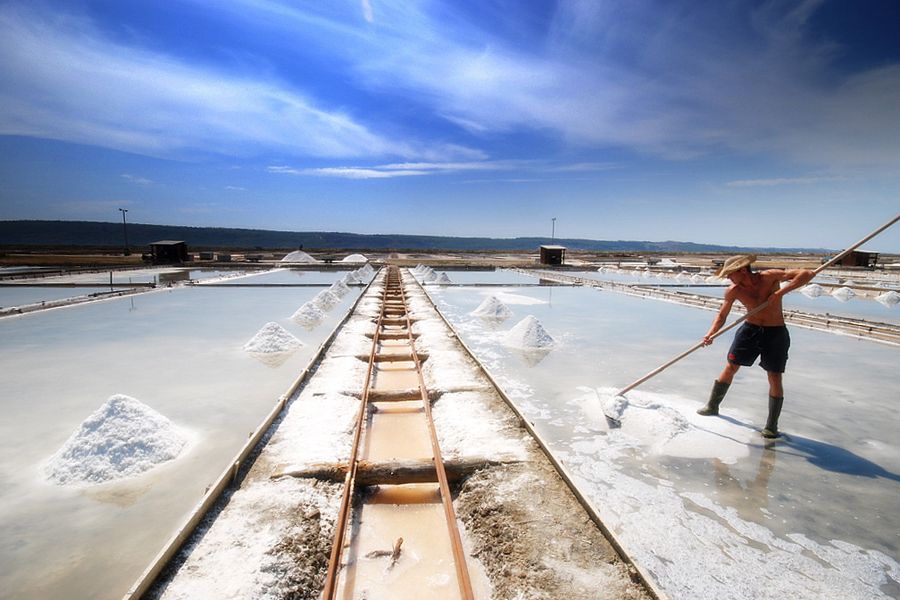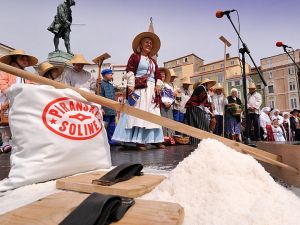Piran celebrates Saltpans
Piran, Slovenia’s little coastal city, known for its charming medieval old town and picturesque Venetian architecture, wouldn’t exist if it wasn’t for the salt, produced in the nearby saltpans. The tradition of salt farming in Piran area dates back to 13th century and has preserved its traditional production methods for over seven centuries. The Piran’s salt pans of Sečovlje Salina Nature Park (http://www.kpss.si/) represent the Mediterranean’s most northern still active saltpans where salt production is carried on in order to preserve natural and cultural heritage.

In honour of this indispensible and highly important condiment, the people of Piran organize each year “the Saltpans feast”, which takes place at the end of April, around April 23, on the day of St. George, the town’s patron, which announces the beginning of the salt-making season and was in the past marked by mass migration to the salt-pans. In the past around 400 families from Piran and nearby settlements moved to stone built house, situated in the middle of salt pans, where men worked in the saltpans, collecting the crystallized salt from the saltpans to earn enough money for year-round survival of their families.

Salt in ancient times held extraordinary preservative power which is why it was highly valued and its production was legally restricted. It was also the first taxed commodity and was historically used as a method of trade and currency. Even the word “salary” comes from the Latin word for salt because the Roman warriors were sometimes paid in salt. The saying “worth their salt” comes from the Roman times meaning somebody’s worth the wages he receives.
The festival was also marked with a rich accompanying cultural programme that included the traditional St. George procession, music and dance performances performed by local folklore groups, workshops, demonstrations of unique saltpans items such as working tools, clothing, demonstration of technologically pristine salt production, etc.
If you are planning a business trip to Piran or Portorož be sure not to miss this extraordinary open-air museum (there is also an indoor Museum of Salt-making) where guided tours for individuals and groups are organised. At the park you can even arrange a teambuilding activity, inviting your business colleagues to step into the shoes of a typical saltpan worker, to test their skills in collecting the salt, wearing typical clothing and using traditional saltpan tools.
On the other hand beside the Salina Park you can find an enchanting Thalasso spa centre, the Lepa Vida centre, where beside enjoying different body treatments you can also organize a nice intimate party for your business partners, where seemingly endless horizons with mystical views over numerous saltpans and the unique smell of the sea breeze create a special, memorable atmosphere.













